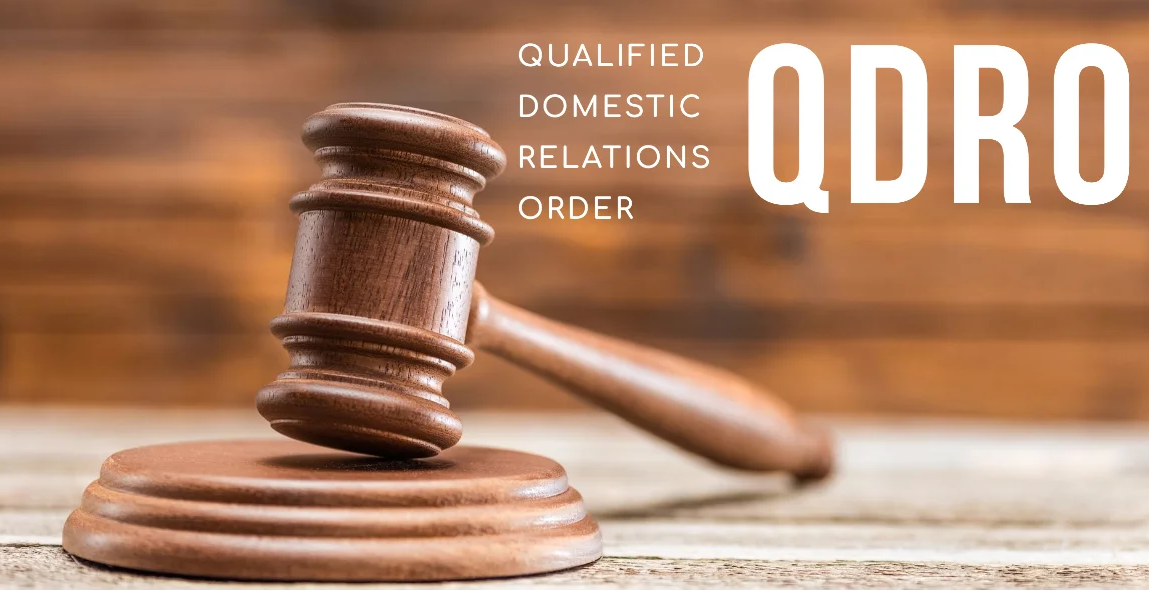What we do
Our office provides qualified domestic relations order (QDRO) services. The majority of divorces include the division of one or more retirement accounts. Such retirement plans may includemilitary retirement benefits, ERISA-based plans, or Individual
Retirement Accounts (IRA). Understanding the language pertinent to an accurate division of any retirement can be complex. There are many considerations when drafting an order that meets the parties’ intent as agreed upon in their dissolution of marriage.
Most family law attorneys and parties find drafting domestic relations orders (DROs) to be demanding and long due to the strict rules of any given pension plan. It is imperative that issues such as survivor benefits, cost of living adjustments, early retirement subsidies, etc., are addressed accurately.
We have the experience to ensure that all pertinent provisions in a DRO adequately capture the intent of the parties.
Consult With a Qualified Domestic Relations Order (QDRO) Specialist with Over 20 Years of Experience
What is a QDRO? A QDRO is a court order that divides retirement benefits between divorcing or separating spouses.
• Why is a QDRO Important? A QDRO ensures you receive your fair share of your spouse’s retirement benefits.
Common QDRO Terms
1. Award Formula – the award formula should be stated to include the percentage or dollar amount as of a specified valuation date, typically date of separation. It should also consider the period of marriage versus credited service with the employer.
2. Participant is not in pay – indicate whether the parties intend to complete a separate interest or future shared payment order.
3. Participant is in pay – typically, only a shared payment order will be acceptable by the plan. Determine what form of benefit the participant is receiving. If the participant elected and is receiving a joint and survivor benefit with the former spouse as beneficiary, consider whether the form of benefit can be changed under the terms of the Plan and include language to that effect.
4. Defined Contribution Plans – address whether earnings and/or losses will be applied and whether any outstanding loans will be excluded or included when calculating the alternate payee’s benefit.
5. Defined Benefit Plans – Death Benefits – include language regarding what happens to either party’s portion of the benefit in the event of the death of either party prior to or post their benefit commencement date.
6. Division of Benefits:
• Defined Benefit Plans:
o Percentage: Specifies the percentage of the participant’s monthly benefit that will be paid to the alternate payee.
o Dollar Amount: Specifies a fixed dollar amount that will be paid to the alternate payee each month.
o Formula: Specifies a formula for calculating the alternate payee’s benefit, such as a fraction of the participant’s accrued benefit.
• Defined Contribution Plans:
o Percentage: Specifies the percentage of the participant’s account balance that will be transferred to the alternate payee.
o Dollar Amount: Specifies a fixed dollar amount that will be transferred to the alternate payee.
7. Form of Payment:
• Lump Sum: Specifies that the alternate payee’s share of the benefits will be paid in a single lump sum.
• Periodic Payments: Specifies that the alternate payee’s share of the benefits will be paid in periodic payments, such as monthly or annually.
8. Survivor Benefits:
• Specifies whether the alternate payee will be eligible for survivor benefits in the event of the participant’s death.
OTHER CONSIDERATIONS
1. Notice of Adverse Interest – Plans to be divided pursuant to divorce should be notified of an alternate payee’s interest as soon as possible to avoid the following:
a. Participant terminates employment and takes a full distribution of a defined contribution plan.
b. Participant commences benefits under a defined benefit plan and the alternate payee loses rights to a separate interest lifetime benefit or early retirement subsidies.
c. Participant dies losing all rights to the benefit without any survivor benefits available to the alternate payee
What will Matevosyan Law Group do for your QDRO Process?
• We will draft a QDRO that meets all legal requirements.
• We will submit the QDRO to the Plan Administrator of your spouse’s retirement plan.
• The plan administrator will review the QDRO to ensure it complies with plan rules and IRS regulations.
Frequently Asked Questions:
• How long does the QDRO process take? The processing time can vary depending on the complexity of the QDRO and the plan administrator’s workload.
• What happens if the QDRO is denied? We will modify it and resubmit it if necessary.
• Can I modify a QDRO after it has been submitted? In some cases, it may be possible to modify a QDRO after it has been submitted to the plan. You should consult an attorney at Matevosyan Law Group for further information.
Please enter your contact details and a short message below and I will try to answer your query as soon as possible.



